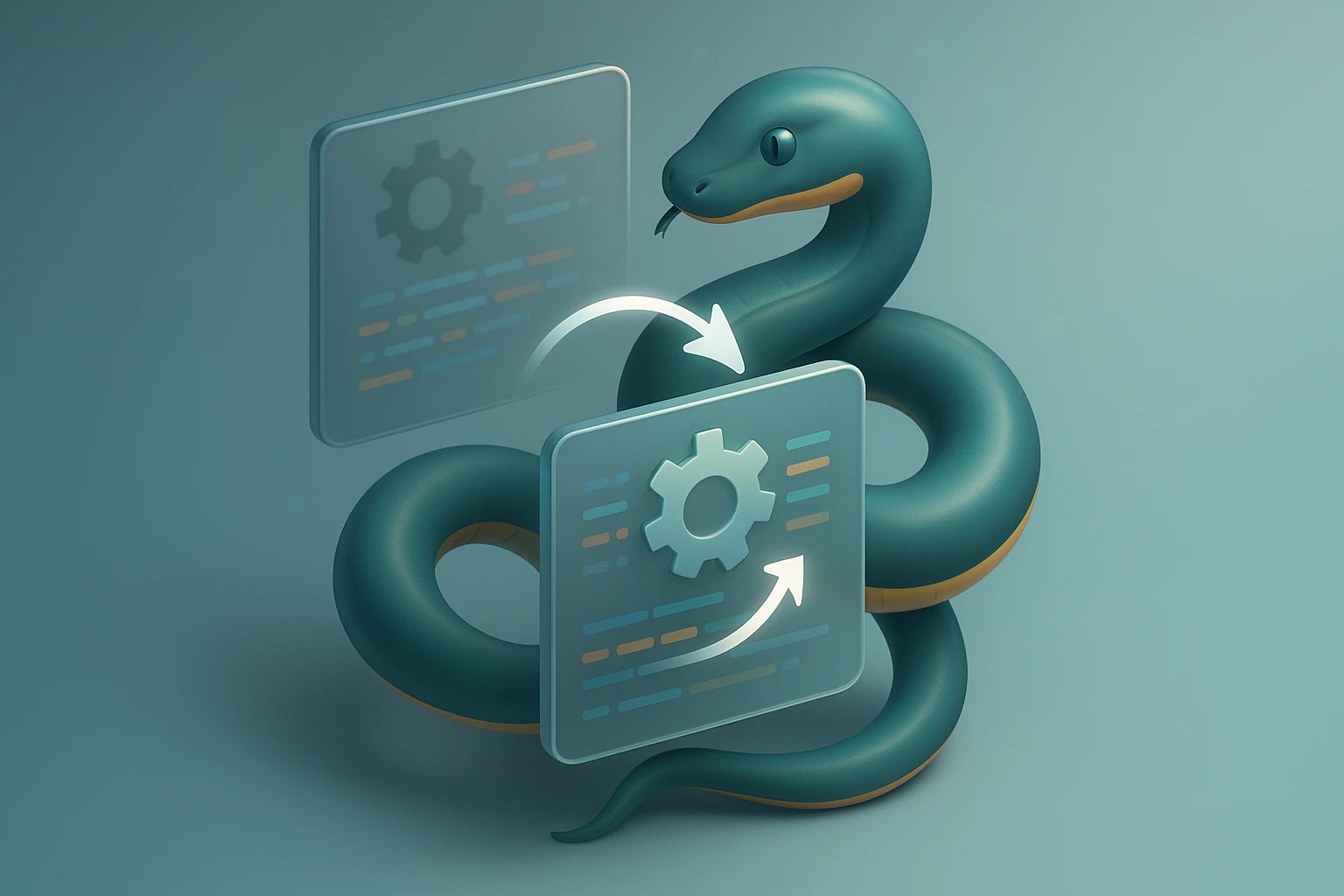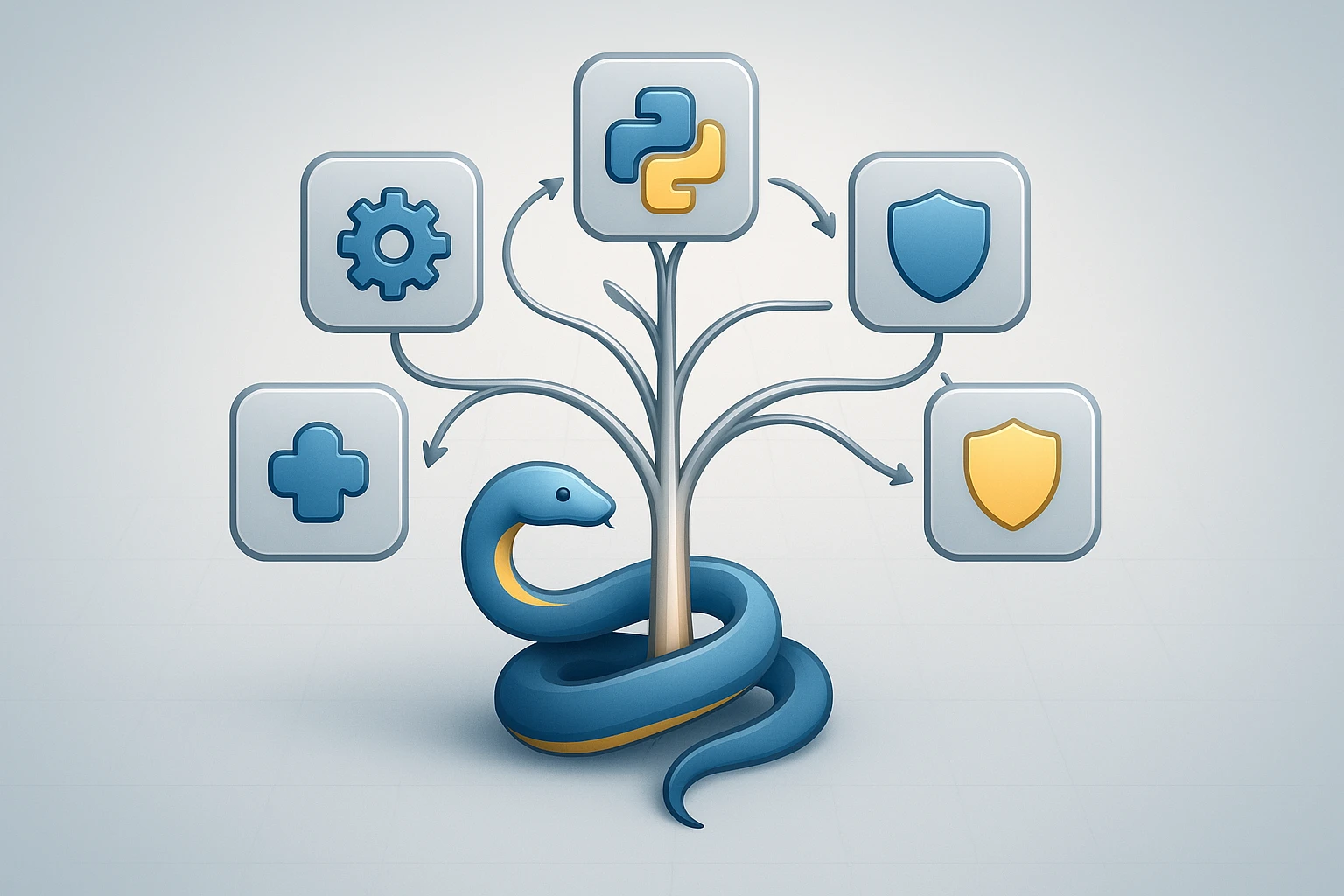How to Handle FileNotFoundError
Dev at a laptop debugging FileNotFoundError: checking file path and permissions, creating missing file, using try/except and logging, then prompting user to enter correct filename.

Understanding the Impact of Missing Files in Your Code
Every developer, regardless of experience level, encounters moments when their perfectly crafted code suddenly crashes with a FileNotFoundError. This isn't just a minor inconvenience—it's a fundamental challenge that can halt production systems, corrupt data pipelines, and frustrate users who depend on your application. The ability to anticipate, detect, and gracefully handle missing files separates robust, production-ready software from fragile prototypes that crumble under real-world conditions.
FileNotFoundError represents one of the most common exceptions in programming, occurring when your application attempts to access a file that doesn't exist at the specified location. This seemingly simple problem encompasses multiple scenarios: users providing incorrect file paths, files being moved or deleted between checks, permission issues preventing file access, or even subtle differences in path separators across operating systems. Understanding these nuances transforms error handling from a reactive afterthought into a proactive design consideration.
Throughout this comprehensive guide, you'll discover practical strategies for preventing FileNotFoundError before it occurs, implementing defensive coding techniques that gracefully handle missing files, and building user-friendly error recovery mechanisms. You'll learn to distinguish between different failure scenarios, implement proper logging for debugging, and create resilient file operations that maintain application stability even when the unexpected happens. Whether you're building data processing pipelines, web applications, or desktop software, mastering file handling will elevate the reliability and professionalism of your projects.
Why FileNotFoundError Occurs
The root causes of FileNotFoundError extend far beyond simple typos in file paths. Understanding these underlying mechanisms helps you build more resilient applications from the ground up. When your program requests a file, the operating system must locate it within the filesystem hierarchy, verify permissions, and establish a file handle—any disruption in this chain triggers an exception.
Relative versus absolute paths create one of the most frequent sources of confusion. When you specify a relative path like "data/input.txt", the operating system interprets this relative to the current working directory, which may differ from your expectations depending on how the application was launched. A script executed from different locations will search for files in different directories, leading to inconsistent behavior that works in development but fails in production.
"The most dangerous errors are those that work perfectly during development but fail silently in production environments where file structures differ."
Operating system differences compound these challenges. Windows uses backslashes in paths (C:\Users\Documents\file.txt), while Unix-based systems use forward slashes (/home/user/documents/file.txt). Hardcoding path separators into your application guarantees cross-platform compatibility issues. Case sensitivity presents another pitfall—Linux filesystems distinguish between "File.txt" and "file.txt" as separate entities, while Windows treats them identically.
Common Scenarios Leading to Missing Files
- 🔄 Race conditions where files exist during validation but get deleted before processing
- 🔐 Permission restrictions preventing read access despite file existence
- 📂 Incorrect working directory assumptions when scripts run from unexpected locations
- ⚙️ Configuration errors pointing to outdated or incorrect file paths
- 🌐 Network path issues when accessing files on remote or mounted filesystems
External dependencies introduce additional complexity. When your application relies on files created by other processes, timing becomes critical. A monitoring script that reads log files might attempt access before the logging service has created them. Backup systems might temporarily move files, creating brief windows where expected resources become unavailable. Understanding these dynamic scenarios helps you implement appropriate retry logic and fallback mechanisms.
Prevention Through Defensive Coding
The most effective approach to handling FileNotFoundError involves preventing it from occurring in the first place through careful design and validation. Defensive coding practices establish safeguards that verify assumptions before attempting risky operations, reducing the likelihood of runtime exceptions while maintaining code clarity.
Path validation should occur at the earliest possible point in your application flow. Before attempting to open a file, verify its existence using appropriate checking mechanisms. However, this introduces a subtle race condition—the file might exist during the check but disappear before the actual open operation. This "time-of-check to time-of-use" vulnerability means that existence checks serve as optimization hints rather than guarantees, and proper exception handling remains essential.
| Validation Approach | Advantages | Limitations | Best Use Case |
|---|---|---|---|
| Pre-flight existence check | Prevents unnecessary operations, enables early error reporting | Race condition vulnerability, additional filesystem call | User-facing applications where immediate feedback improves experience |
| Try-except handling | Atomic operation, handles race conditions, cleaner code flow | Exception overhead, requires careful error differentiation | Production systems requiring reliability and proper error recovery |
| Default file creation | Ensures file always exists, simplifies logic | May mask configuration errors, requires write permissions | Configuration files and application state management |
| Path normalization | Resolves relative paths, handles symbolic links, cross-platform compatibility | Cannot fix fundamentally incorrect paths | Applications accepting user-provided paths or configuration |
Implementing Robust Path Handling
Modern programming languages provide path manipulation libraries that abstract away platform-specific details. Using these tools consistently throughout your codebase eliminates entire categories of path-related errors. Path objects handle separator conversion, relative path resolution, and symbolic link traversal automatically, reducing the cognitive burden on developers while improving code reliability.
Absolute path conversion transforms relative paths into unambiguous references that work regardless of the current working directory. This technique proves particularly valuable for applications that change directories during execution or accept paths from external sources. By resolving paths to their absolute form immediately upon receipt, you establish a single source of truth that subsequent operations can rely upon.
"Treating file paths as opaque strings rather than structured data leads to subtle bugs that manifest differently across environments and user configurations."
Configuration management systems benefit from establishing a clear hierarchy of path resolution. Environment variables can specify base directories, allowing paths in configuration files to remain relative and portable across installations. This separation of concerns enables the same codebase to operate in development, staging, and production environments without modification, simply by adjusting environment-specific settings.
Exception Handling Strategies
When prevention measures fail, well-designed exception handling provides the safety net that keeps your application running. The goal isn't merely to catch exceptions but to respond appropriately based on context, providing useful feedback while maintaining system stability. Different scenarios demand different responses—some errors warrant immediate termination, while others can be logged and worked around.
Specificity in exception handling allows you to distinguish between recoverable and fatal errors. Catching only FileNotFoundError rather than a broad exception category enables precise responses while allowing unexpected errors to propagate naturally. This specificity aids debugging by ensuring that masked errors don't silently corrupt application state or produce misleading behavior.
Contextual Error Responses
The appropriate response to a missing file depends entirely on the operation's context within your application. A missing configuration file during startup likely represents a fatal error requiring immediate attention, while a missing cache file might simply trigger regeneration. Understanding these distinctions allows you to implement proportional responses that balance robustness with user experience.
- 📋 Optional resources can use default values or alternative data sources when primary files are unavailable
- ⚠️ Critical dependencies should fail fast with clear error messages indicating the missing resource
- 🔄 Transient resources benefit from retry logic with exponential backoff for temporary unavailability
- 💾 User-provided files require friendly error messages guiding users toward resolution
- 📊 Data processing pipelines should log errors and continue with remaining items when appropriate
"Error handling code often exceeds the volume of happy-path logic in production systems, yet receives disproportionately less attention during development."
Logging plays a crucial role in diagnosing file-related issues, particularly in production environments where direct debugging isn't feasible. Comprehensive error logs should capture the attempted file path, the operation being performed, the current working directory, and any relevant context about why the file was expected to exist. This information proves invaluable when troubleshooting issues reported by users or automated monitoring systems.
User-Friendly Error Communication
Technical accuracy in error messages often conflicts with user comprehension. While developers benefit from detailed exception traces, end users need actionable guidance expressed in domain-specific language. Bridging this gap requires translating technical errors into user-facing messages that explain what went wrong and how to fix it without requiring programming knowledge.
Error message design should prioritize clarity over brevity. Instead of displaying raw exception text, construct messages that explain the situation in business terms. A message like "The report template 'quarterly_summary.docx' could not be found in the templates folder. Please ensure the template file exists and try again." provides much more value than "FileNotFoundError: quarterly_summary.docx".
| Error Message Component | Purpose | Example | Common Mistakes |
|---|---|---|---|
| Problem identification | Clearly states what went wrong | "The configuration file could not be loaded" | Being too vague or using technical jargon |
| Specific resource | Identifies the missing file | "settings.json in the config directory" | Displaying full system paths with sensitive information |
| Impact explanation | Describes consequences | "Default settings will be used instead" | Omitting this entirely, leaving users uncertain |
| Resolution guidance | Suggests corrective action | "Restore the file from backup or contact support" | Providing steps that users cannot actually perform |
| Technical details | Aids troubleshooting for support | Error code or log reference number | Overwhelming users with stack traces in primary message |
Progressive Error Disclosure
Layered error presentation balances simplicity with completeness by showing basic information initially while making detailed technical data available on demand. User interfaces can display a concise error summary with an expandable section containing full diagnostic information. This approach serves both non-technical users who need quick guidance and power users or support staff who require comprehensive details for troubleshooting.
Error recovery mechanisms embedded directly in error messages improve user experience significantly. When possible, provide clickable actions that attempt automatic resolution—a "Create default file" button, a "Browse for file" dialog, or a "Retry" option after the user has had time to address the issue. These interactive elements transform error messages from dead ends into pathways toward resolution.
"The difference between a frustrating application and a polished one often lies not in preventing all errors, but in how gracefully those inevitable errors are communicated and resolved."
Advanced File Handling Patterns
Beyond basic exception handling, sophisticated applications employ design patterns that fundamentally restructure how file operations are performed. These patterns reduce error frequency, simplify error handling, and improve code maintainability by centralizing file access logic and establishing consistent behaviors across the application.
The resource manager pattern wraps file operations in a context manager that guarantees proper cleanup regardless of whether operations succeed or fail. This pattern ensures files are closed even when exceptions occur, preventing resource leaks that could exhaust system file handles. Context managers also provide natural locations for implementing retry logic, logging, and error translation without cluttering business logic.
Fallback Hierarchies
Applications often need to check multiple locations for a resource, falling back through a prioritized list until a valid file is found. This pattern proves particularly useful for configuration files, where you might search user-specific directories first, then system-wide locations, and finally embedded defaults. Implementing this hierarchy cleanly requires careful exception handling at each level, distinguishing between "file not found" (continue to next location) and other errors (propagate immediately).
- 🏠 User-specific overrides allow individual customization without affecting other users
- 🌍 System-wide defaults provide consistent baseline behavior across the application
- 📦 Embedded resources ensure the application always has fallback data
- 🔧 Environment-specific configurations enable different behavior in development versus production
- ☁️ Remote resources with local caching balance freshness with availability
Lazy loading defers file operations until the data is actually needed, reducing the impact of missing files on application startup time and allowing the application to function even when some resources are unavailable. This pattern works well for plugins, templates, or data files that may not be required for every execution path. By checking for files only when accessed, you avoid failing fast for resources that might never be needed during a particular run.
"Premature optimization may be the root of all evil, but premature file loading is the root of many unnecessary startup failures."
Testing File Error Scenarios
Comprehensive testing of file handling code requires deliberately creating error conditions that would rarely occur naturally during development. Without intentional testing, error handling code paths remain unexercised until production deployment, where they often fail due to subtle bugs or incorrect assumptions. Systematic testing of error scenarios builds confidence that your application will behave correctly when facing real-world filesystem challenges.
Mock filesystems provide controlled environments where you can simulate various error conditions without affecting the actual filesystem. These testing tools allow you to create scenarios where files exist during checks but disappear before access, where permissions change unexpectedly, or where filesystem operations fail intermittently. By testing against these mocked environments, you verify that your error handling logic works correctly without requiring complex test setup or risking corruption of development data.
Essential Test Scenarios
A thorough test suite for file handling should cover not just the happy path but the numerous ways operations can fail. Each test should verify both that the error is handled gracefully and that the application reaches an appropriate state afterward. Tests should also verify that error messages contain sufficient information for debugging without exposing sensitive system details.
- ❌ Complete absence of expected files at specified locations
- 🔒 Permission denial preventing read or write access to existing files
- ⏱️ Timing variations where files appear or disappear between operations
- 🗂️ Directory vs file confusion where code expects a file but finds a directory
- 🔗 Broken symbolic links pointing to non-existent targets
Integration tests should verify file handling behavior in realistic deployment scenarios. These tests might involve running the application from different working directories, using paths from configuration files, or accessing files on network shares with simulated latency. While unit tests verify individual components work correctly in isolation, integration tests confirm that the entire system handles file operations properly when all pieces work together.
Performance Considerations
File operations represent relatively expensive operations compared to in-memory processing, and error handling adds additional overhead. Balancing robustness with performance requires understanding the costs of various approaches and making informed tradeoffs based on your application's specific requirements and usage patterns.
Existence checks before file operations add filesystem calls that may be unnecessary if files usually exist. In scenarios where missing files are rare, the "ask forgiveness rather than permission" approach of attempting operations directly and handling exceptions proves more efficient. Conversely, when missing files are common, pre-flight checks prevent the overhead of exception handling and allow for more efficient bulk validation.
"Optimizing error handling requires profiling actual usage patterns rather than assumptions about how the application will be used."
Caching and Memoization
Applications that repeatedly access the same files benefit from caching strategies that reduce filesystem operations. Once you've verified a file exists and loaded its contents, storing that data in memory eliminates subsequent filesystem calls. However, caching introduces complexity around invalidation—how do you know when the cached data is stale and needs refreshing? Time-based expiration, file modification timestamp checking, or explicit invalidation events each have appropriate use cases.
Batch operations that process multiple files should implement efficient error handling that doesn't stop processing at the first failure. By collecting errors and continuing with remaining items, you maximize throughput while still maintaining visibility into problems. This pattern works particularly well for data processing pipelines where individual file failures shouldn't halt the entire batch.
Cross-Platform Compatibility
Applications targeting multiple operating systems must account for fundamental differences in how filesystems work. Path handling, case sensitivity, permission models, and even file locking behavior vary across platforms. Writing truly portable file handling code requires abstracting these differences behind platform-independent interfaces while testing on all target platforms.
Path separator normalization prevents hardcoded assumptions about whether paths use forward slashes or backslashes. Modern path libraries handle this automatically, but legacy code or string concatenation for path building often introduces platform-specific bugs. Using dedicated path joining functions rather than string concatenation ensures correct separator usage regardless of the underlying operating system.
Platform-Specific Considerations
| Platform Aspect | Windows Behavior | Linux/Unix Behavior | Portable Solution |
|---|---|---|---|
| Path separators | Backslash (\) primary, forward slash (/) often accepted | Forward slash (/) only | Use path library functions for joining and splitting |
| Case sensitivity | Case-insensitive (File.txt equals file.txt) | Case-sensitive (File.txt differs from file.txt) | Maintain consistent casing in code and documentation |
| File locking | Mandatory locks prevent access by other processes | Advisory locks that cooperating processes respect | Implement explicit locking mechanisms in application logic |
| Line endings | CRLF (\r\n) | LF (\n) | Open text files in text mode for automatic conversion |
| Reserved names | CON, PRN, AUX, NUL, COM1-9, LPT1-9 are invalid | No reserved names | Validate filenames against Windows restrictions for portability |
Permission models differ significantly between Windows and Unix-like systems. While Unix uses a straightforward owner/group/other permission system, Windows employs Access Control Lists with more granular permissions. Applications should avoid making assumptions about permission structures and instead focus on whether operations succeed or fail, handling permission errors gracefully regardless of the underlying cause.
Logging and Monitoring
Production applications require comprehensive logging of file operations to diagnose issues that occur in deployed environments. Effective logging captures sufficient context to reconstruct what happened without overwhelming storage or making logs difficult to search. Structured logging formats enable automated analysis and alerting when file operation failures exceed acceptable thresholds.
Log messages for file operations should include the operation type, target path, outcome, and any relevant context about why the operation was attempted. When operations fail, additional details like error codes, permission information, and the current user context help narrow down root causes. However, be cautious about logging sensitive information—full filesystem paths might expose internal system structure or user directories that shouldn't be visible in log aggregation systems.
Monitoring Metrics
Beyond individual log entries, aggregate metrics reveal patterns in file operation failures that might indicate systemic issues. Tracking the rate of FileNotFoundError exceptions over time helps identify whether problems are increasing, potentially indicating configuration drift or external system changes. Correlating file operation failures with other application metrics often reveals relationships that aren't apparent from isolated log entries.
- 📈 Error rate trends showing whether file operations are becoming more or less reliable
- 🎯 Specific path failure patterns identifying consistently problematic locations
- ⏰ Temporal correlations linking failures to deployment times or external events
- 👥 User-specific patterns revealing configuration issues affecting certain users
- 🔄 Retry success rates indicating whether transient errors resolve themselves
Alert thresholds should distinguish between expected occasional failures and anomalous patterns requiring investigation. A single missing file might be normal user behavior, but a sudden spike in FileNotFoundError exceptions could indicate a deployment problem, configuration change, or infrastructure issue. Establishing baseline metrics during normal operation enables meaningful anomaly detection that surfaces real problems without generating false alarms.
Security Implications
File handling code represents a common attack surface where inadequate validation can lead to security vulnerabilities. Path traversal attacks exploit insufficient input validation to access files outside intended directories. Error messages that reveal internal system structure provide reconnaissance information to attackers. Proper security practices treat all file paths as potentially malicious input requiring validation and sanitization.
Path traversal prevention requires validating that resolved paths remain within expected boundaries. Attackers often use sequences like "../../../" to navigate up directory hierarchies and access sensitive files. Resolving paths to their canonical absolute form and verifying they start with an allowed prefix prevents these attacks. Never trust user-provided paths without validation, even in internal applications where users are supposedly trustworthy.
"Security vulnerabilities in file handling often stem from optimistic assumptions about input validity rather than technical complexity."
Secure Error Handling
Error messages must balance providing useful information with avoiding information disclosure that aids attackers. Detailed error messages help legitimate users resolve problems, but revealing full filesystem paths, internal directory structures, or system usernames provides reconnaissance data. Separating user-facing error messages from detailed diagnostic logs allows you to maintain security while still capturing information needed for troubleshooting.
Timing attacks can leak information about filesystem structure by measuring how long operations take. If checking for a file in a deeply nested directory takes longer than checking a shallow path, attackers can infer directory structure even when direct access is denied. While defending against timing attacks in file operations is challenging, awareness of the risk helps you avoid inadvertently exposing sensitive information through performance characteristics.
Documentation and Team Communication
File handling requirements and error scenarios should be documented clearly to ensure consistent implementation across a codebase. When multiple developers work on a project, explicit guidelines about path handling, error responses, and logging practices prevent inconsistent behavior that confuses users and complicates maintenance. Documentation should cover not just how to use file handling utilities but why certain approaches were chosen and what alternatives were considered.
Code comments in file handling sections should explain assumptions and constraints that might not be obvious from the code itself. If a particular path must exist before the application starts, document that requirement. If certain file operations are expected to fail occasionally and that's acceptable, note it so future maintainers don't "fix" intentional behavior. These contextual explanations help teams maintain code correctly as requirements evolve.
Onboarding and Knowledge Transfer
New team members benefit from explicit guidance about file handling patterns used in the codebase. Rather than expecting developers to reverse-engineer conventions from existing code, document standard practices in architecture guides or coding standards. Include examples of proper error handling, logging, and user messaging that demonstrate the expected quality bar for file operations.
Runbooks for common file-related issues help operations teams respond effectively when problems occur in production. These guides should explain how to diagnose missing file errors, what logs to examine, and what remediation steps to take. Including decision trees that map symptoms to likely causes accelerates incident response and reduces the time users experience degraded functionality.
What is the difference between checking if a file exists before opening it versus just trying to open it and catching the exception?
Checking file existence before opening (look before you leap) adds an extra filesystem operation but allows for clearer code flow and potentially better error messages. The try-except approach (easier to ask forgiveness) is more efficient when files usually exist and handles race conditions better since the check and open are not atomic. For production code, try-except is generally preferred because it's more robust against timing issues where files might disappear between the check and open operations.
How should I handle FileNotFoundError differently in development versus production environments?
Development environments benefit from verbose error messages including full paths and stack traces to help developers debug quickly. Production environments should log detailed information to monitoring systems while showing users friendly, actionable messages that don't expose internal system details. Consider using environment-specific configuration to control error verbosity and whether the application fails fast or attempts graceful degradation when files are missing.
Should I use relative or absolute paths in my application?
Absolute paths eliminate ambiguity about file locations but reduce portability across different installations. Relative paths are more flexible but depend on the current working directory being what you expect. A hybrid approach works well: accept relative paths in configuration, immediately resolve them to absolute paths based on a known anchor point (like the application installation directory), and use those absolute paths throughout the code.
How can I test file handling code when I cannot easily create the error conditions?
Use mock filesystem libraries that simulate various error conditions without requiring actual filesystem manipulation. These tools let you test scenarios like permission errors, missing files, and race conditions in a controlled, repeatable way. Additionally, dependency injection patterns allow you to swap real file operations with test doubles that simulate failures, making your code more testable without architectural compromises.
What information should I include in logs when a FileNotFoundError occurs?
Log the attempted file path, the operation being performed, the current working directory, the user or process attempting the access, and any relevant context about why the file was expected to exist. Include timestamps to correlate with other events. However, be mindful of security—avoid logging sensitive data or information that could aid attackers. Consider using log levels appropriately so detailed diagnostic information can be enabled when troubleshooting without overwhelming production logs.
How do I make my file handling code work across different operating systems?
Use path manipulation libraries rather than string concatenation to build paths, which handles separator differences automatically. Avoid hardcoding path separators or making assumptions about case sensitivity. Test on all target platforms, not just your development environment. Be aware of platform-specific reserved filenames on Windows and different permission models. Opening text files in text mode rather than binary mode handles line ending differences transparently.




